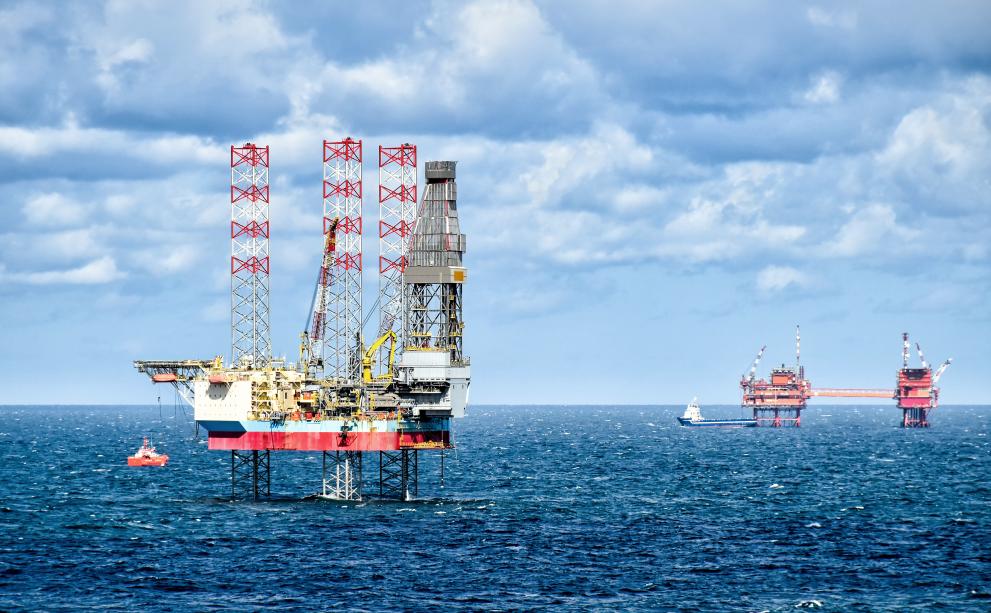
Most oil and gas production in Europe takes place offshore. In 2022, EU countries reported 311 installations in European waters, compared to 347 in 2021. The overall oil and gas production decreased by 11% and no major accidents were reported.
While safety is the primary responsibility of operators and individual countries, EU rules are important as an accident in one country can also cause environmental and economic damage to its neighbours.
EU-wide safety standards
Under the Directive on Safety of Offshore Oil and Gas Operations (2013/30/EU), the EU put in place a set of rules to help prevent accidents, as well as respond promptly and efficiently should one occur.
Before offshore gas or oil exploration or production begins, companies must prepare a "Report on Major Hazards" for their offshore installation. It must contain a risk assessment and an emergency response plan and companies must keep resources at hand in order to put them into operation when necessary.
When granting licenses, EU countries must ensure that companies are well-financed and have the necessary technical expertise and technical solutions, to ensure the safety of installations. This must be independently verified and done prior to the installation going into operation.
The directive also requires that national authorities verify safety provisions, environmental protection measures and the emergency preparedness of rigs and platforms. If companies do not respect the minimum standards, EU countries can impose sanctions, including halting production.
Information on how companies and EU countries keep installations safe must be made available to citizens and companies will be fully liable for environmental damages caused to protected marine species and natural habitats. For damage to marine habitats, the geographical zone will cover all EU marine waters, including exclusive economic zones and continental shelves.
Citizens can express opinions and comments on the environmental effects of planned offshore oil and gas exploration operations and must be duly informed by the authorities of their respective EU country.
Evaluation of the directive
In 2020 the Commission provided a report assessing the implementation of the directive, along with a staff working document with additional background information.
Liability for damage from offshore accidents
In 2015, the European Commission published a report and staff working document (SWD/2015/167) on liability and compensation in the case of offshore accidents in Europe. These documents look at how bodily injury, property damage and economic losses are handled, as well as the financial security instruments that would cover such damage. They build on the findings of a study published in 2014.
EU Offshore Oil and Gas Authorities Group
The competent authorities of EU countries work together through the European Union Offshore Oil and Gas Authorities Group (EUOAG) to share best practices and improve standards. The group is chaired by the European Commission and promotes best practices and high safety standards for offshore oil and gas operations worldwide.
To further promote offshore safety, the Commission works with its international partners on the implementation of the highest safety standards worldwide.
Offshore safety of oil and gas operations annual reports
Since 2016, the Commission publishes annual reports on the safety of EU offshore oil and gas operations, the latest of which covers 2021.
- Annual Report on the Safety of Offshore Oil and Gas Operations in the EU 2022 COM(2024)187 final
- Annual Report on the Safety of Offshore Oil and Gas Operations in the EU 2021 COM(2023)247 final
- Annual Report on the Safety of Offshore Oil and Gas Operations in the EU 2020 COM(2022)417 final
- Annual Report on the Safety of Offshore Oil and Gas Operations in the EU 2019 COM(2021)585 final
- Annual Report on the Safety of Offshore Oil and Gas Operations in the EU 2018 COM(2020)263 final
- Annual Report on the Safety of Offshore Oil and Gas Operations in the EU 2017 COM(2019)358 final
- Annual Report on the Safety of Offshore Oil and Gas Operations in the EU 2016 COM(2018)595 final
Related links
- Study: Decommissioning of offshore oil and gas installations (February 2022)
- Report assessing the implementation of Directive 2013/30/EU COM(2020) 732 final | Accompanying Staff Working Document SWD(2020) 269 final
- Report on liability, compensation and financial security for offshore oil and gas operations pursuant to Article 39 of Directive 2013/30/EU | Staff working document SWD(2015) 167 final
- Commission Implementing Regulation (EU) No 1112/2014
- Study: Civil liability, financial security and compensation claims for offshore oil and gas activities in the European Economic Area (August 2014)
- Directive 2013/30/EU on safety of offshore Oil and gas operations
